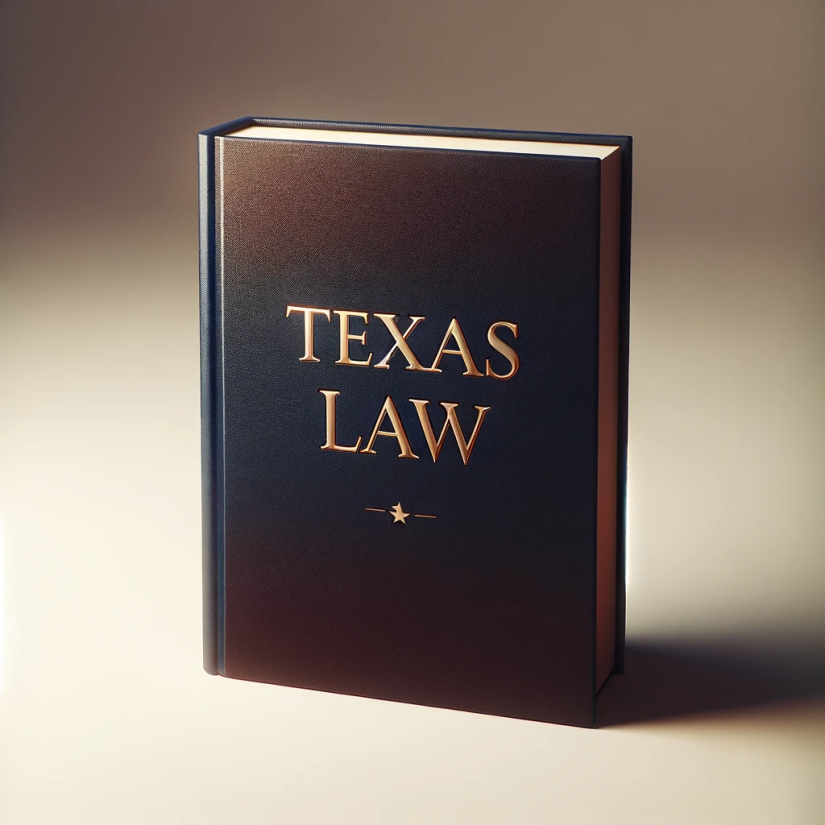Understanding Gross Negligence in Texas Personal Injury Claims
January 1, 2024

- Proving Gross Negligence in Texas
- The Burden of Proof in Gross Negligence Cases
- Exemplary Damages in Gross Negligence Cases
- Key Differences between Gross Negligence and Ordinary Negligence
- Implications of Gross Negligence in Texas Law
- Reference to Texas Civil Practice and Remedies Code
- When to Consult an Experienced Personal Injury Attorney
Gross negligence is a critical legal concept that falls between ordinary negligence and intentional misconduct. It is important to have a clear understanding of gross negligence, especially in the context of Texas law. In this article, I will provide a comprehensive definition of gross negligence in Texas and explain the specific laws and requirements associated with it.
- Gross negligence refers to behavior that falls between unreasonable conduct and full-on criminal intent.
- In Texas, victims can sue under a theory of gross negligence and potentially receive more compensation than with an ordinary negligence claim.
- To establish a gross negligence cause of action in Texas, the plaintiff must prove two additional elements in addition to the four elements of ordinary negligence.
- The first element is that the defendant’s actions involved an extreme degree of risk when considering the probability and magnitude of harm caused to others.
- The second element is that the defendant knew of the risk involved but acted with conscious indifference to the rights, safety, or welfare of others.
Proving Gross Negligence in Texas
Winning a gross negligence case in Texas requires establishing two additional elements on top of the four elements of ordinary negligence. These elements are crucial in presenting a compelling case and ultimately holding the defendant accountable for their actions.
The Objective Test: Extreme Degree of Risk
The first additional element is the Objective Test. It necessitates proving that the defendant’s actions involved an extreme degree of risk when considering the probability and magnitude of harm caused to others. This element highlights the need to demonstrate that the defendant’s behavior went beyond mere negligence and posed a significant danger to the plaintiff or others.
The Subjective Test: Conscious Indifference
The second element is the Subjective Test. Under this test, the plaintiff must establish that the defendant knew of the risks associated with their actions but acted with conscious indifference to the rights, safety, or welfare of others. This requires presenting evidence that the defendant was aware of the potential harm but chose to disregard it, displaying a reckless disregard for the well-being of others.
To succeed in a gross negligence case, the plaintiff must present clear and convincing evidence of both the Objective and Subjective Tests. This higher standard of proof reflects the serious nature of gross negligence claims and ensures that liability is established beyond a reasonable doubt.
When determining liability and the amount of damages to be awarded, the jury considers various factors, including the nature of the wrong, the character of the conduct, the degree of culpability, and the defendant’s net worth. These considerations help ensure a fair outcome and reflect the severity of the defendant’s grossly negligent actions.
| Element | Description |
|---|---|
| Objective Test | The defendant’s actions involved an extreme degree of risk considering the probability and magnitude of harm caused to others. |
| Subjective Test | The defendant knew of the risk involved but acted with conscious indifference to the rights, safety, or welfare of others. |
The Burden of Proof in Gross Negligence Cases

In gross negligence cases in Texas, the burden of proof is higher compared to ordinary negligence cases. While ordinary negligence cases require a preponderance of the evidence, gross negligence cases must be proven by clear and convincing evidence.
Clear and convincing evidence refers to a higher standard of proof that produces a firm belief or conviction in the truth of the allegations sought to be established. This heightened standard is necessary due to the serious nature of gross negligence claims and the potential punitive damages involved.
The clear and convincing evidence standard requires a higher degree of certainty in establishing the defendant’s liability for gross negligence. It ensures a thorough examination of the evidence, leaving no doubt about the defendant’s conscious indifference to the rights, safety, or welfare of others.
The clear and convincing evidence standard not only aims to protect the rights of the plaintiff but also serves as a safeguard against false or unjust claims of gross negligence. It demands a substantial level of proof that significantly reduces the likelihood of erroneous judgments.
Furthermore, in gross negligence cases, both liability and the amount of damages to be awarded must be determined by a unanimous jury verdict. This requirement ensures a fair and comprehensive evaluation of the evidence presented and reinforces the seriousness of the allegations at hand.
| Ordinary Negligence | Gross Negligence | |
|---|---|---|
| Standard of Proof | Preponderance of the evidence | Clear and convincing evidence |
| Jury Verdict | Majority decision | Unanimous decision |
| Scope of Risk | Failure to meet reasonable standard of care | Conscious indifference beyond ordinary negligence |
| Potential Damages | Compensatory damages | Exemplary (punitive) damages |
Exemplary Damages in Gross Negligence Cases
In gross negligence cases, if the plaintiff proves that the defendant was grossly negligent, they may be entitled to exemplary damages, also known as punitive damages. Unlike compensatory damages, which aim to make the victim whole, exemplary damages are meant to punish the defendant and deter similar future conduct.
In Texas, exemplary damages can be significant and go beyond the actual losses suffered by the plaintiff. These awards are designed to target large companies with deep pockets and can be much higher than damages awarded in ordinary negligence cases.
The jury considers factors such as the defendant’s net worth and the offensiveness of the conduct when determining the amount of exemplary damages.
Exemplary damages serve two key purposes: punishment and deterrence. By allowing the jury to award punitive damages in cases of gross negligence, Texas law sends a clear message that such behavior will not be tolerated, especially from corporations with significant financial means.
These exemplary damages not only provide financial compensation for the plaintiff, but they also act as a deterrent for other companies and individuals, urging them to uphold higher standards of care and avoid engaging in grossly negligent acts.
Key Differences between Gross Negligence and Ordinary Negligence
Understanding the differences between gross negligence and ordinary negligence is essential when navigating legal disputes in Texas. While both involve a failure to meet the reasonable standard of care, they have distinct characteristics and implications. This section will explore the key differences between gross negligence and ordinary negligence, shedding light on the burden of proof, the standard of care, and the potential consequences for the parties involved.
Ordinary Negligence
Ordinary negligence refers to conduct that falls below the expected standard of care. It involves acts or omissions that a reasonably prudent person would not commit in a similar situation. In Texas, ordinary negligence claims require the plaintiff to prove four elements:
- The defendant owed a duty of care to the plaintiff.
- The defendant breached that duty of care.
- The breach of duty was the proximate cause of the plaintiff’s injuries or damages.
- The plaintiff suffered actual damages as a result of the breach.
Gross Negligence
Gross negligence goes beyond ordinary negligence and involves behavior that demonstrates conscious indifference to the rights, safety, or welfare of others. It represents a higher degree of carelessness or recklessness. In Texas, proving gross negligence requires the plaintiff to establish all four elements of ordinary negligence plus two additional elements:
- The defendant’s actions involved an extreme degree of risk, considering the probability and magnitude of harm to others.
- The defendant knew of the risk involved but acted with conscious indifference to the rights, safety, or welfare of others.
The inclusion of these two elements distinguishes gross negligence from ordinary negligence in terms of the defendant’s state of mind and the level of disregard for the well-being of others.
Burden of Proof
When it comes to the burden of proof, there is a significant difference between gross negligence and ordinary negligence cases in Texas. In ordinary negligence cases, the plaintiff must prove their case by a preponderance of the evidence, which means that it is more likely than not that the defendant breached the duty of care. On the other hand, gross negligence cases require clear and convincing evidence, a higher standard that demands a firm belief or conviction in the truth of the allegations. This higher burden of proof reflects the seriousness and potential punitive nature of gross negligence claims.
Potential Consequences
The consequences for gross negligence and ordinary negligence also differ. In ordinary negligence cases, the focus is on compensating the victim for their losses, including medical expenses, lost wages, and pain and suffering. However, in gross negligence cases, there is the potential for punitive damages, also known as exemplary damages. These damages are designed to punish the defendant and deter similar conduct in the future. Punitive damages can exceed the actual losses suffered by the plaintiff and vary based on factors such as the defendant’s net worth and the severity of their conduct.
| Ordinary Negligence | Gross Negligence | |
|---|---|---|
| Burden of Proof | Preponderance of the evidence | Clear and convincing evidence |
| Standard of Care | Falls below the expected standard of care | Conscious indifference to the rights, safety, or welfare of others |
| Consequences | Compensatory damages | Potential punitive damages |
Understanding these key differences between gross negligence and ordinary negligence is crucial in establishing legal claims and assessing potential liabilities. Whether you are pursuing or defending against a negligence claim in Texas, consulting an experienced attorney will ensure you navigate the complexities of the legal system and protect your rights.
Implications of Gross Negligence in Texas Law

Gross negligence in Texas law carries significant legal implications for both plaintiffs and defendants. Understanding the consequences of gross negligence is crucial when navigating personal injury claims and civil liability in Texas.
For Plaintiffs
Proving gross negligence can have favorable outcomes for plaintiffs compared to ordinary negligence claims. When successful, gross negligence claims can result in higher compensation due to the awarding of exemplary damages.
| Implication | Description |
|---|---|
| Higher Compensation | Gross negligence claims can lead to larger financial awards for plaintiffs compared to ordinary negligence claims. Exemplary damages serve as a deterrent for similar conduct in the future and can be substantial. |
For Defendants
Being found grossly negligent as a defendant can have significant financial consequences beyond typical compensatory damages.
| Implication | Description |
|---|---|
| Potential Financial Penalties | Defendants found guilty of gross negligence may face punitive damages, which can exceed compensatory damages. Punitive damages are designed to punish the defendant and discourage similar behavior in the future. |
To avoid potential liability and the associated penalties, businesses and individuals must fully grasp the legal standards of care required in Texas and ensure they meet those standards.
By understanding the legal implications of gross negligence in Texas, both plaintiffs and defendants can effectively navigate the complexities of personal injury cases and civil liability.
Reference to Texas Civil Practice and Remedies Code
The Texas Civil Practice and Remedies Code, specifically Chapter 41, governs the recovery of damages in legal cases, including those involving gross negligence. This code is essential to understand when pursuing or defending against gross negligence claims in Texas. It provides a framework for the definition of terms such as gross negligence, compensatory damages, and noneconomic damages.
One important aspect of Chapter 41 is the establishment of limitations on exemplary damages, also known as punitive damages. Exemplary damages serve as a means to punish the defendant and deter similar future conduct. The code outlines the burden of proof required to establish a claim for exemplary damages, which is clear and convincing evidence. This higher standard of proof ensures that the allegations are firmly believed or convicted to be true.
Moreover, Chapter 41 sets specific limitations on the amount of exemplary damages that can be awarded. These limitations are based on economic damages, which are the actual monetary losses suffered by the plaintiff, as well as other factors such as the defendant’s net worth. Such limitations aim to provide a fair and balanced approach to awarding exemplary damages while preventing excessive or unjust punitive measures.
Understanding the provisions laid out in the Texas Civil Practice and Remedies Code, especially in Chapter 41, is crucial for both plaintiffs seeking to recover damages and defendants striving to protect their interests. By familiarizing themselves with the code, parties involved in gross negligence cases can ensure they navigate the legal landscape effectively, presenting strong arguments based on the established guidelines.
When to Consult an Experienced Personal Injury Attorney
Proving a claim for gross negligence requires a fact-intensive process and navigating the legal complexities involved can be challenging. Many plaintiffs achieve maximum recovery only with the help of an experienced personal injury attorney. Their expertise and knowledge of the legal system can help plaintiffs build a strong case, gather necessary evidence, and navigate the legal process more effectively. Consulting an experienced personal injury attorney can greatly increase the chances of success in a gross negligence claim.
In gross negligence cases, having a skilled attorney by your side offers several benefits:
- Expertise: Personal injury attorneys specializing in gross negligence cases have a deep understanding of the laws and regulations surrounding such claims. They can analyze the specifics of your situation and guide you on the best legal strategy.
- Investigation: Proving gross negligence requires thorough investigation and gathering of evidence. An experienced attorney has access to investigative resources and can compile the necessary documentation to support your claim.
- Negotiation: Insurance companies and opposing parties often try to minimize their liability in gross negligence cases. A personal injury attorney will negotiate on your behalf, ensuring that you receive fair compensation for your losses.
- Litigation: If negotiations fail, an attorney can represent you in court. They will advocate for your rights, present your case effectively, and fight to maximize your recovery.
- Exemplary Damages: Securing exemplary damages in a gross negligence case requires strong arguments and compelling evidence. An experienced attorney knows how to present your case to the jury and increase the chances of receiving punitive damages.